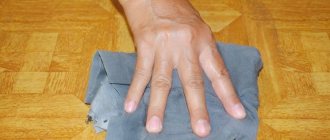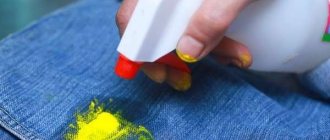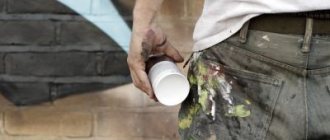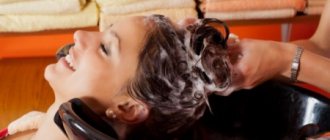Most modern apartments have laminate floors. And this is not surprising, because this flooring is particularly practical, but its decorative top layer requires careful handling. It is quite difficult to ensure this during indoor renovations. Therefore, when it runs out, you have to decide how to wash the laminate after repair, and do it yourself and without streaks.
Regular cleaning of laminate flooring plays an important role in its maintenance. But cleaning the floor after renovation is a completely different matter. Typical contaminants are white caps of polyurethane foam, used today in almost all repair work, which stick tightly to the floor. Therefore, after using it, you need to think about how to clean the laminate from traces of polyurethane foam without damaging the surface. A similar problem occurs with traces of dried paint, wallpaper paste or super glue. Often you have to rack your brains to figure out how best to remove superglue from laminate flooring or eliminate a scratch left by special equipment during repairs.
Let's try to figure out how to deal with typical dirt remaining on the floor after renovation.
Secrets to cleaning laminate flooring
After renovation, it is not so easy to remove stains on laminate flooring. It is not always possible to cover the laminate completely; there may be stains on the laminate from polyurethane foam, stains on the laminate from cement or paint. How to wash laminate flooring after renovation without damaging it? Which chemicals can be used and which cannot. A convenient table will help you quickly figure out how to wash laminate flooring and what product can be used to remove stains on laminate flooring.
Stains on laminate
White stains on laminate flooring can be removed by adding a little vinegar or saline solution to the water.
How to Remove Oil Paint from Laminate Flooring
If paint gets on the laminate, it can be easily fixed with a solvent, Whitespirit or any auto chemicals. The main thing is to apply the product directly to the stain and quickly wipe it with a slightly damp soft cloth. But there is always a risk that stains from the solvent will remain on the laminate, so it is important to select a product depending on the type of paint (oil, alkyd, etc.).
Remove masking tape from laminate flooring
You can remove masking tape from the laminate using the “Mr. Proper” product, or you can purchase a special liquid “anti-scotch” product produced by the company Chistyulya, but the cost is not cheap for one use, about a thousand rubles. Vodka or alcohol may also work. You can remove tape from a laminated surface using other methods.
You can wash the laminate from cement using a remover for cement deposits, for example, Atlas Szop.
Polyurethane foam on laminate
It is enough to buy Dimexide at the pharmacy, apply and wait 5 minutes, and then wipe with a damp cloth.
To remove difficult stains from laminate flooring, you can use alcohol and acetone, but you should be wary of the fact that these substances can corrode the coating.
Wallpaper glue on laminate flooring can be easily cleaned with warm water.
A stain on laminate flooring of unknown origin can be removed using alcohol-based window cleaners.
Blood stain on laminate flooring - denatured alcohol, window cleaner. You can add a little ammonia to the water, or lightly rub hydrogen peroxide over the stain, mixing it with a couple of drops of ammonia.
Shoe marks, black marks - eraser, baking soda solution.
Stains from chocolate, lipstick, fat, juice, alcohol
A greasy stain, resin - such a stain should first be frozen and then scraped off with a plastic knife. Grease stains can be removed with warm water and laundry soap.
Pencil marks - white spirit, or apply toothpaste and rinse immediately.
Source
How to remove super glue
When carrying out repair work, cyanoacrylate second glue, which is usually called superglue, is often used to quickly connect different materials. But its instant hardening creates a lot of inconvenience. For example, when cleaning you have to decide how to remove super glue from the laminate. This is a big problem, since the glue instantly sets to any surface and dries very quickly. There are several solutions for how to remove super glue from laminate flooring.
First aid
If drops of superglue are immediately noticed on the laminate flooring, you can use their liquid consistency. When working with super glue, it's good to have blotting paper on hand (toilet paper or napkins will also work). Its structure contains many small capillaries that provide instant absorption of moisture. In such a situation, you should act immediately. The faster you bring the blotting paper to the drops, the more efficiently they will be absorbed and the greater the chance that the appearance of the coating will not be affected. Remaining traces of super glue are removed using acetone.
Special equipment
Often you have to rack your brains when you find glue drops on the flooring tiles. How to remove super glue from laminate flooring, because it has already set? In this case, you can use a debonder (anti-glue) or, simply put, a super glue solvent. Similar products are produced by most manufacturers of cyanoacrylate-based glue. It goes on sale in one blister with a tube of superglue or as a separate product. Debonder does not dissolve frozen glue drops, but only softens them, turning them into a thick paste. You can easily pry it off and remove it with a toothpick. After this, the cleaned area is wiped using special detergents.
Household chemicals
Many people consider acetone to be too aggressive for laminate flooring. However, when there is nothing else at hand than to wipe off the super moment from the laminate, you can also use acetone. Of course, before using an aggressive agent, it is worth testing in a secluded place: make a smear with acetone and observe the reaction. A less aggressive alternative to acetone is nail polish remover. It is convenient to apply it with a brush to dried superglue and gradually wipe it off with a rag. But this liquid is less effective than acetone.
Medicine from the first aid kit
Most home medicine cabinets contain an anti-inflammatory drug called Dimexide. It is usually used in the form of a solution for rheumatism, bruises, sprains, inflammatory skin diseases, etc. The drug contains a potent chemical called dimethyl sulfoxide. For medical purposes, Dimexide solution is used only in diluted form. However, some people don’t realize that this product can effectively remove superglue from laminate flooring. It is enough to moisten a cotton pad with the solution and rub it on the adhesive stain. If it doesn't come right away, you can leave the cotton pad on the stain for a few minutes and then scrub off the super glue again.
Mechanical removal
This method of removing superglue can only be used for small drops. Before mechanical removal, the stain is usually treated with the same Dimexide to soften the dried adhesive mass. After which it is carefully cut off at the very surface. The cleaned area is carefully rubbed with a laminate care product.
How to remove paint on laminate and other surfaces?
join the discussion
Share with your friends
During the renovation process, paint ends up everywhere it can, as a result of which cleaning takes no less time than the renovation itself. Let's figure out how to wipe it off if it gets on the surface.
What is needed to remove water-based paint from the ceiling
Before you begin removing the covering from the ceiling, you will have to pay attention to your own safety. It is imperative to use safety glasses, rubber or fabric gloves and a respirator.
It is recommended to wear an old long-sleeved jacket and pants, and cover your head with a scarf (or other headdress) so as not to stain your hair. Among the tools it is desirable to have:
- a stepladder or an unnecessary stable table to stand on;
- roller and brushes;
- metal brush;
- a grinding attachment for a drill (not always required, but it doesn’t hurt to buy it in advance);
- putty knife;
- wallpaper glue (can be replaced with homemade paste).
Note! If there is carpet, linoleum, tiles or parquet, the floor should be covered with dense polyethylene. You will have to buy it or use old magazines, wallpaper, cardboard
We select the product depending on the type of surface
From fabric
During the repair process, paint often gets on clothes. Acrylic paints are difficult to remove from fabric. If they got on clothes, tablecloths or curtains just recently, you can deal with them using sunflower oil. After oil treatment, it’s time for laundry soap. The soaped item is kept in hot water for a quarter of an hour, then washed in a machine.
Some fabrics can be cleaned with white spirit or Vanish stain remover, but the risk of ruining the item is quite high . If you can’t remove the stain, you can always hide it behind the appliqué. Gouache, watercolor, and water-based paint can be easily wiped off with laundry soap. Things must first be soaked in warm water for 15 minutes.
From linoleum and laminate
It is not difficult to wipe off water-based paint from a floor covered with linoleum or laminate. If the stain has already dried, it will take longer. It must first be softened with a wet cloth.
The use of ordinary solvents and abrasives on linoleum and laminate is strictly prohibited; there are special construction solvents for them.
Vegetable oil is used to remove oil paint from linoleum. It will also help clean the plastic window sill. Warm glycerin is used for the same purpose. Using solvent on plastic can result in matte stains.
From wallpaper
A diluted solvent will help remove paint from wallpaper. It should be applied directly to dried drops, being careful not to get it on the wallpaper. The chemical should not be rubbed in too hard: the delicate structure of the wallpaper will not withstand this. It is enough to simply rub a cotton pad or rag soaked in it over the stain.
It is almost impossible to remove dried paint; you will have to re-glue the stained areas or figure out how and what to disguise them with.
From the ceiling
Stains on suspended ceilings are a serious problem. You can try to wash acrylic paint with soapy water or dishwashing gel. Another way is to rub the stain with hydrogen peroxide. If these budget funds do not help, you will have to go to the store for a special remover for this type of dye.
What not to do
The laminate coating itself is quite durable, but it should be handled with care so as not to damage the top decorative layer. Therefore, it is better to avoid certain actions in order to preserve the beautiful appearance of the floor covering. You should avoid the following:
- use of alkali-containing and acid-containing detergents;
- use of powders with abrasive particles;
- do not use sharp objects when cleaning various contaminants;
- excessive moisture during cleaning.
From all of the above, we can conclude that all problems with contamination of laminate flooring can be solved, but it is still better to prevent their occurrence. Therefore, before starting repairs, you should try to cover the floor surface as much as possible. In addition, it is worth taking care of purchasing cleaning products in advance to keep them on hand. Then you most likely won’t have to deal with the consequences of the repair.
And it is also important to remember that in order to have fewer problems with removing contaminants, you should try to catch the moment and wash the laminate while the apartment is still being renovated, because the fresher the contaminants, the easier they are to remove.
Oily
Oil-based paint is almost impossible to remove without the help of chemicals. It is necessary to moisten cotton wool in gasoline, white spirit, acetone or kerosene, and apply it to the stain. After 10 minutes, wipe it from the edges to the center. Remains of dyes and solvents should be washed off with running water, then washed. A rich cream or vegetable oil will help to remove oil paint from leather shoes, which will slightly soften the paintwork. After this, the stain is washed with a saturated soap solution.
After painting, many stains remain on the floor. If acrylic paint has hardened on laminate or linoleum, plastic or metal, it is quite easy to scrape it off with a stationery or regular knife. It washes well only if it has not had time to dry. It hardens very quickly, thanks to the film former included in the composition.
A fresh layer can be washed off with warm water using a sponge or soft cloth. If water does not solve the problem, dishwashing gel or simple soap will do. If there is no risk of surface damage, you can use a brush. Absorbed paint is removed with acetone, gasoline, kerosene, white spirit , although these substances are unsafe for many types of materials.
Common mistakes when cleaning products
Some people, when removing dyes from clothes, often rub the area where the stain appeared with a brush. Due to increased rubbing, the material deteriorates and wears out prematurely.
Such a mistake is fraught with deterioration in the color of the clothing and its complete loss of its qualities.
Often, when cleaning any product, circular movements are made . Do not rub the dirt from the center to its edges. Movements should only be made back and forth.
This cleaning error leads to an increase in the size of the acrylic paint stain on the product.
A common mistake is treating the product with boiling water . Before removing the dye, the surface should be moistened with cold rather than hot water. Boiling water may cause the product to lose its shape. This is especially true for clothing and wallpaper.
A common mistake is removing stains with solvents from surfaces that are sensitive to them without first checking their effects. After using chemicals, clothes and wallpaper may be completely damaged.
The main mistake is delay in washing the stain from the dye. It is often impossible to clean dried acrylic paint from the surface of clothing, wallpaper, and ceilings. Such an error may result in the product becoming unusable.
Removers
Construction supply stores sell special removers. Universal products and those designed for acrylic dyes are suitable. It is better to work with these potent substances with gloves, a mask (respirator) and goggles, as they have a very pungent, unpleasant odor. It takes about 15 minutes to remove the stain, then rinse the area thoroughly.
There are recipes for preparing washes at home. A solution of caustic soda has proven itself well. If you need to get a thick product that will not drain from vertical surfaces, add oatmeal to it.
It will take at least an hour to soften the paint.
Removal from tree
It is necessary to remove old paint from a wooden surface quite often, because doors and door fittings, baseboards, floor coverings and window frames are made from this material. All these parts can be found in any home, and they can last much longer than the paint and varnish used to finish them, so they are easier to repair than to replace. At the same time, wood is still not the strongest foundation, so it’s worth first learning about the specifics of a particular species.
In general, four main methods are applicable for cleaning wood products:
- the mechanical method is the most universal, it is best suited for widespread use at home, when paint is removed from the surface with a spatula and power tools;
- sandblasting gives an extremely quick result, but is expensive, and it should be performed in the most gentle manner and only by the hands of an experienced specialist;
Additional information: How to remove water-based paint from metal at home
Removal of a worn out or outdated protective and decorative layer can be carried out in various ways, during which certain materials and tools will be used. The following options are considered the most popular and effective:
Most often, PVA-based water-based paint is used for painting interior spaces. It is an emulsion of small particles of polymers, coloring pigments and water. This paint has low resistance to moisture and is easily removed with water and soap solution.
Expert tip: Before you begin removing paint, you need to determine the type of surface. Because the answers to the questions: “How to remove water-based paint from wood?” and “How to remove coating from glass or concrete?” – will be completely different. Based on this information, a withdrawal method is selected.
- Take a hairdryer and plug it in.
- Visually divide the treated area into small zones.
- Direct hot air onto the painted area.
- If the tool has a built-in paint stripper, scrape in a progressive motion in one direction. As the substance sticks, remove it with a separate spatula.
- Remove the swollen warm paint with a spatula.
- Remove remaining traces of paint using a wire brush or sandpaper.
- Vacuum, do wet cleaning.
Advice! To remove a thick layer of old paint from a large area, I can recommend thickly lubricating the surface with wallpaper glue or starch paste, and then, carefully smoothing it, stick on several layers of old newspapers. The glue will soften the old coating, and after it dries, a thick layer of paint can be easily removed along with newspapers using a metal spatula.
Set your hair dryer to the highest heat setting and gradually heat the painted area of the metal that needs to be freed from paint. At the same time, remove the swollen surface with a spatula. This method is effective, but its disadvantage is that the removal process can take a very long time.
DOCKER S5 is an industrial remover of chemically resistant, complex paintwork with quick action (3-10 min.) Effectively removes multi-layer coatings, NC, CV paints, primers, enamels, putties, thermal paints. Can be used for interior and home work. Gel solution. Odorless.
An effective method for removing thick, caked-on layers of paint is to use a sander. You can take a drill with a special attachment for removing paint in the form of a round brush with iron bristles, or a metal crown attachment. Nozzles are sold at any hardware store.
It is recommended to make notches on top of oil paint with an ax, which will partially provoke peeling and partially contribute to better adhesion of the primer applied to the old layer. In this case, it is better to apply the so-called concrete contact, designed specifically for such purposes, as a primer.
At enterprises where metal cabinet products are painted, if defects are detected in manufactured products, use the universal remover “ABRO PR-600” (Fig. 8). Rust protection on metal at home?
This is also a spray. If there are internal spaces in welded or prefabricated parts, you can reach in and machine the desired surface. Then all that remains is to wash off the residue or blow it with air under pressure.
Advantages of emulsion compositions
Water-based paint is an emulsion of water, dye and polymers that act as mixture stabilizers. The particles do not dissolve in water, as in a classic solution, but are suspended.
Water-based and water-dispersion paints are similar in that their main component is water. These finishing materials have the same scope of application and similar properties.
The emulsion composition has the following advantages:
- the mixture is absolutely harmless to human health;
- dries completely in 2–3 hours;
- there is no sharp specific smell;
- you can get the desired shade by adding pigment;
- easy to apply to the surface;
- instruments are washed with plain water.
Among the disadvantages of this painting material, it should be noted that it has a limited scope of application. It is only suitable for interior work, as it can dissolve when exposed to rain or snow.
However, it is precisely this drawback that can be considered as an advantage when a bucket of water-based emulsion is accidentally overturned on new linoleum or parquet. After all, it won’t be difficult to wash off water-based paint, especially if the stain appeared recently.











